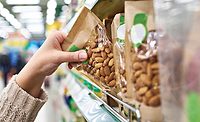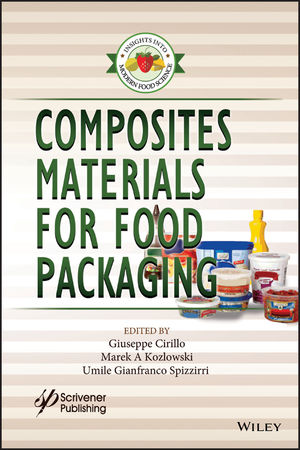Show Preview
Pack Expo Preview: Health and wellness food market continues strong growth

Consumer demands for healthy, fresh and convenient snacking options are driving growth in the market.
Photo courtesy of PMMI
The global health and wellness food market is projected to reach $811.82 billion by 2021. Driven by consumer demand, the growth of better-for-you and healthy snacks could reach a projected CAGR of about 5% over the next few years, according to the “Snack Food, Packaging and Processing Market Assessment and Trends” report, released by PMMI, The Association for Packaging and Processing Technologies. Nuts/seeds and fruit snacks are expected to account for 27% of the market share in 2025. Combination snacks, including ones that add a healthy component, such as fruit or nuts, to meat/cheese, are also increasing in popularity.
Preventing Allergen Cross-Contamination
With more organic items filling the carts of today’s health-conscious consumers, it’s no surprise that premium foods are often synonymous with natural, non-GMO and preservative-free ingredients. In addition to evolving consumer expectations about the ways high-end snacks look, feel and taste, these ingredients have had a transformative impact on packaging from the materials and containers to the equipment on the line.
Increased demand for gluten- and allergen-free products requires that manufacturers establish separate production lines; closely manage production schedules to minimize clean-in-place and changeover time between batches; and implement proper cleaning techniques to eliminate cross-contamination, according to the PMMI report.
Packaging to Preserve Freshness
In addition, the adoption of high pressure processing is on the rise. HPP is a cold pasteurization technique by which food and beverage products in their final packages are processed under high pressures, leading to the inactivity of certain microorganisms. In fact, many authoritative bodies, including the FDA, USDA, Health Canada, European Union and others, acknowledge that HPP can increase shelf life and meet food safety standards without adding preservatives or altering flavor.
Since foods that use HPP are designed to provide fresher properties than thermally processed foods, material selection and shelf life design are also highly important. As a result, brands are moving to flexible formats featuring high barrier properties that protect against light and oxygen to lengthen the shelf life of preservative-free ingredients. Companies seek out similar features for applications in ready-to-eat (RTE) meals and semi-rigid formats, including trays or cups with flexible lidding to preserve freshness between multiple servings.
Better Barrier Protection and Branding
Functionality should also be top of mind when it comes to food package performance to deliver a premium experience. Snack food manufacturers must ensure that their packages are also aesthetically appealing to align with the ingredients, process and premium brand offerings.
Attendees and exhibitors of this year’s PACK EXPO Las Vegas have a slew of options to choose from when processors are searching for the right solutions for their needs. The PACKage Printing Pavilion, making its PACK EXPO Las Vegas debut, focuses on the advantages of digital printing. With the advancements in digital technology, PACK EXPO Las Vegas is the place to see the latest in cost-effective solutions for smart, short-run, on-demand, personalized, cost-effective, variable-data packaging.
PACK EXPO Las Vegas
Manufacturers can connect with peers on the latest technologies at PACK EXPO Las Vegas 2019 (Sept. 23-25; Las Vegas Convention Center). Produced by PMMI, the show will showcase innovations from more than 2,000 exhibitors spanning over 900,000 net square feet of exhibit space. The show brings together top companies from around the world to explore state-of-the-art packaging technologies, equipment and materials, and exchange ideas and build professional relationships with 30,000 packaging professionals in attendance.
Registration, which includes access to both PACK EXPO Las Vegas and Healthcare Packaging EXPO, is $30 until Sept. 1, when the price increases to $100.
For more information, visit www.packexpolasvegas.com
Looking for a reprint of this article?
From high-res PDFs to custom plaques, order your copy today!






